
Last Updated on October 30, 2025 by David
Actionable Techniques to Restore Colour and Pigment in Faded Victorian Mosaic Tiles
- The vibrant colours of Victorian mosaic tiles often fade due to a myriad of factors, including ingrained dirt, old coatings, and general surface wear, all of which extend beyond simple age. Conducting a thorough assessment is essential to determine the depth of the fading and to decide on the best course of restoration.
- Harsh chemicals and aggressive scrubbing can severely damage the original pigments, especially with encaustic and geometric tiles, leading to irreversible harm. Selecting the correct cleaning method is crucial for maintaining the tiles' integrity and aesthetic appeal.
- The journey towards safe restoration begins with a thorough deep cleaning using pH-neutral solutions along with low-speed rotary machines fitted with soft brushes, ensuring no damage occurs. This approach guarantees a gentle yet effective cleaning process, essential for tile care.
- It is vital to carefully remove old sealers and waxes to expose the genuine condition of the tile surface, which is necessary for successful restoration. This critical step allows for an accurate assessment of what interventions are required.
- Colour enhancement can be successfully achieved through breathable, stone-safe sealers that enrich the tile's tone without forming a glossy film, thus preserving a natural appearance. Choose products specifically designed for this purpose to ensure optimal results.
- Professional restoration techniques can effectively revive original pigments without resorting to repainting or artificial colouring, thereby safeguarding the authenticity of the tiles. It is crucial to trust experts who specialise in this field to ensure quality outcomes.
- Maintaining restored tiles is essential and involves gentle cleaning routines while steering clear of acidic or bleach-based products that could jeopardise the restored finish. Educating oneself on proper care techniques is vital for prolonging the tiles' lifespan.
- Heritage-sensitive methods are critical in protecting both the aesthetic value and historical significance of these exquisite tiles. Gaining an understanding of the historical context is invaluable to enhance the restoration process.
Exploring Proven Techniques to Restore the Beauty of Victorian Tiles
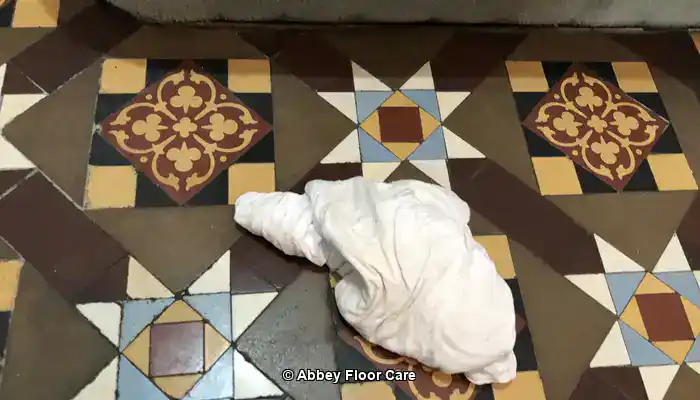
Abbey Floor Care restoring the colour to a Victorian clay tile floor using a colour-enhancing impregnating sealer.
Victorian encaustic and mosaic tiles represent a significant element of British architectural heritage. They are celebrated for their intricate craftsmanship and unique colour palettes, which are composed of mineral pigments fused directly into the clay tile bodies. These tiles not only serve an aesthetic function but also narrate the story of the era in which they were crafted, making their restoration essential for preserving historical integrity. Ensuring the restoration of these tiles means that the rich history and artistry they embody are passed down to future generations, thereby reinforcing their cultural significance.
Pro Tip: Key Products for Daily Maintenance of Victorian Tiles

Fila Pro Floor Cleaner
|
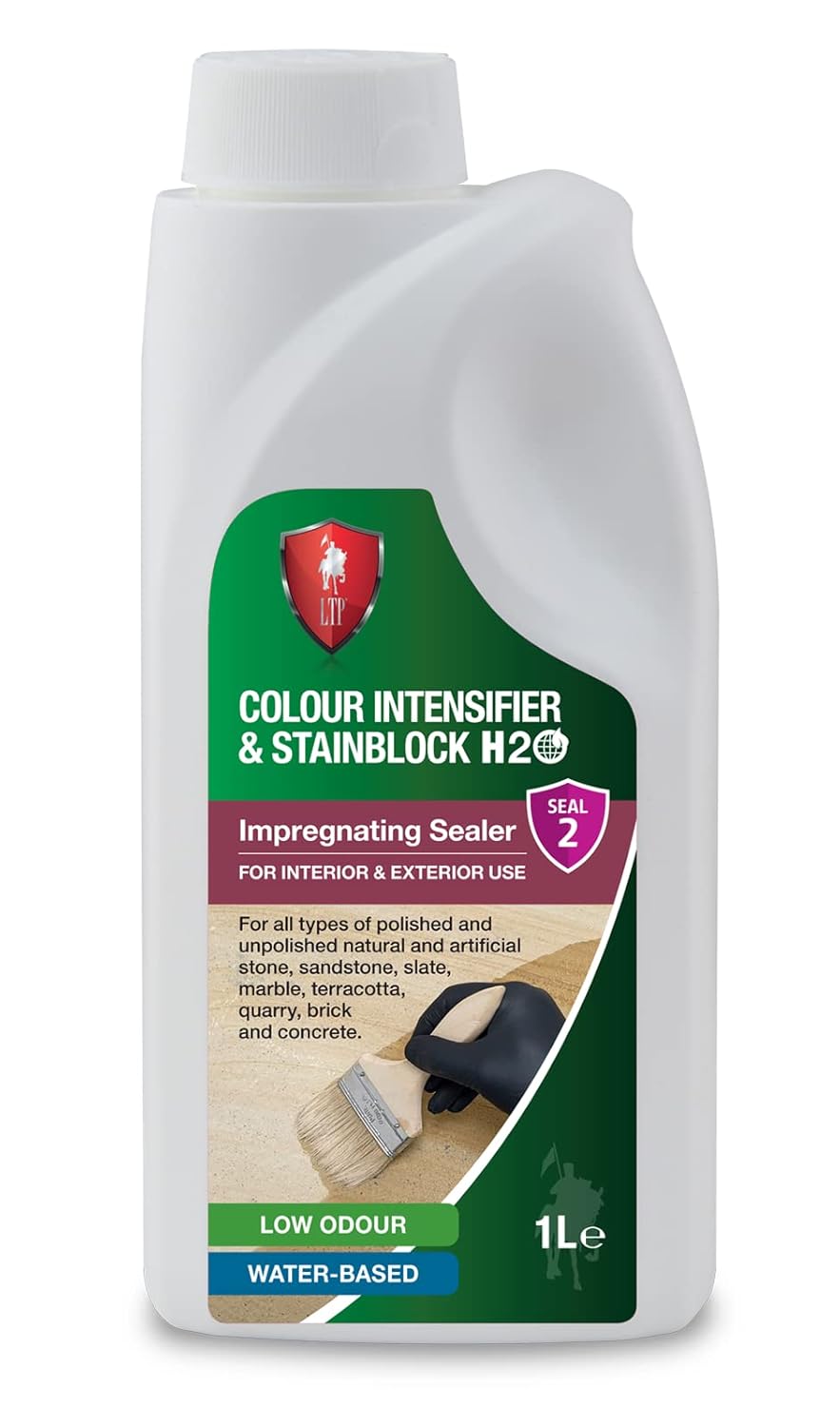
LTP Colour Intensifier & Stainblock H20
|
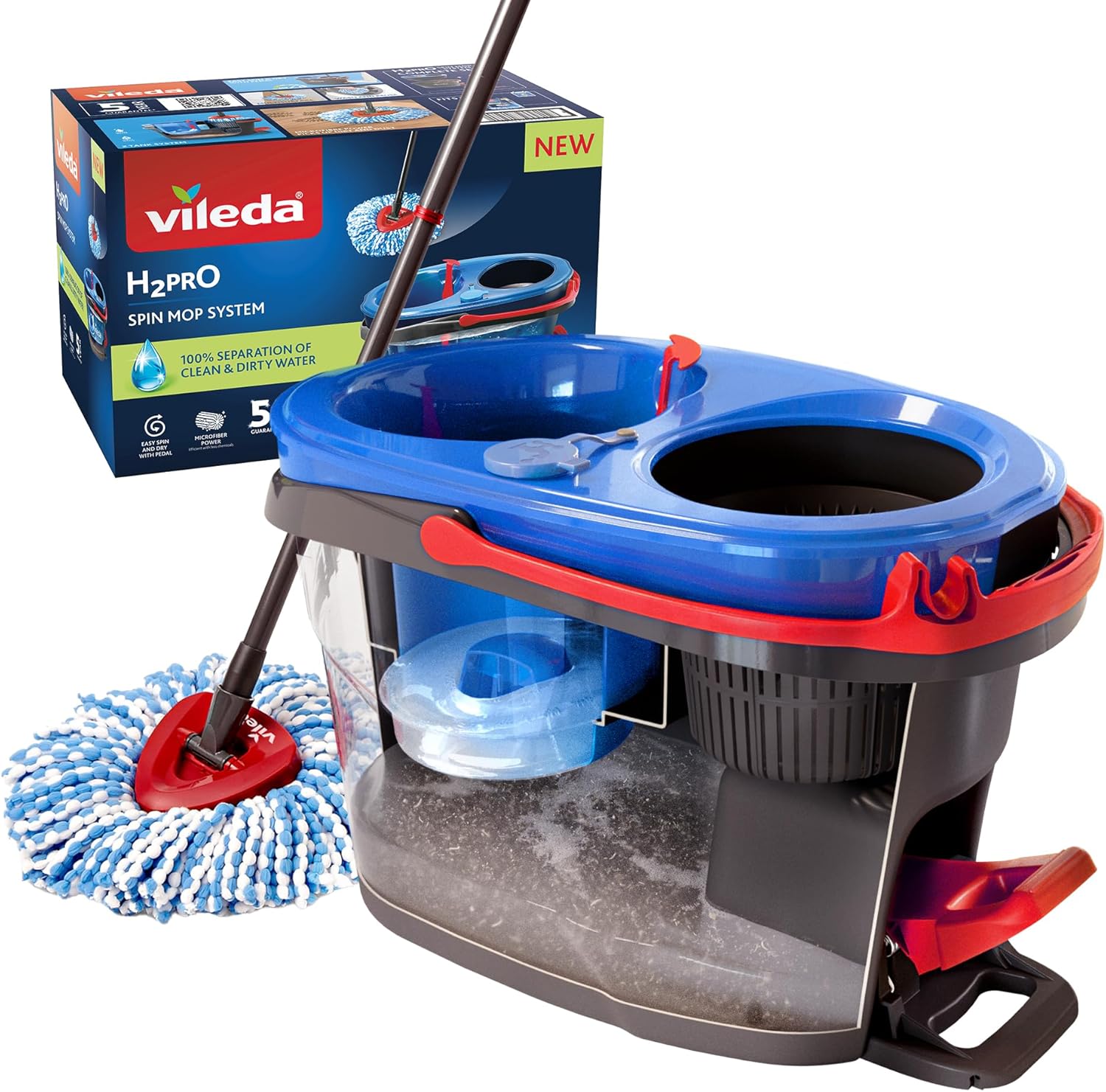
Vileda H2PrO Spin Mop System
|
Over time, however, these tiles may lose their visual impact due to surface wear, chemical effects, and environmental influences. Restoring their original vibrancy is a specialist task that requires a comprehensive understanding of the materials involved, historically accurate techniques, and the use of premium products tailored for the job. This knowledge aids not only in the restoration process but also in ensuring that the tiles maintain their aesthetic and functional qualities for years to come, celebrating the unique artistry of the Victorian era.
Understanding the Factors Behind Fading and Dulling in Victorian Mosaic Tiles
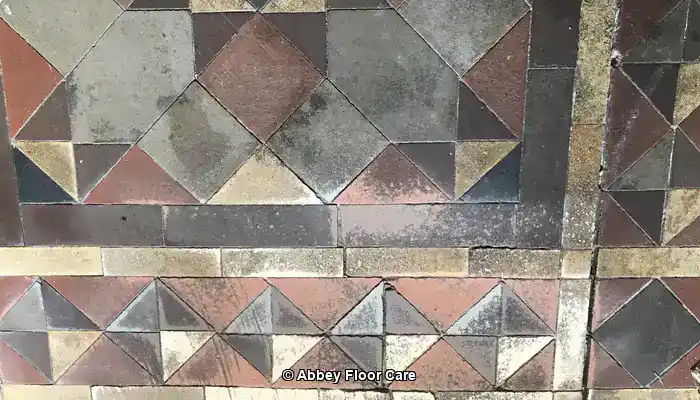
Example of Victorian Clay Tile Floor dulled through surface wear and damage.
While the pigments are integral to the tile, numerous factors contribute to fading and dulling over time:
- Accumulated dirt and grime: Continuous foot traffic introduces fine particles and oils that penetrate porous surfaces, scattering light and significantly muting colours. Regular cleaning can alleviate this issue and help preserve the tiles' appearance.
- Wax and polish buildup: Layers of wax or sealants lacking breathability can trap moisture, resulting in a cloudy or yellowed appearance that detracts from the vibrancy of the tiles. Recognising the necessity for breathable products is essential for effective maintenance.
- Moisture-driven issues: Many Victorian tiles were laid over subfloors without damp-proof membranes, leading to rising damp that brings soluble salts to the surface. These salts crystallise as efflorescence on the tile surface, further obscuring the original tones and colours. Addressing moisture issues is vital in any restoration effort.
- Physical abrasion: Over time, small scratches accumulate from everyday wear, disrupting smooth light reflection and ultimately diminishing the visual richness of the tiles. Regular maintenance can help minimise such damage and preserve the tiles' integrity.
Effective restoration must address each of these contributors without compromising the tile’s historical makeup, ensuring the renewal of their original beauty and integrity, thereby maintaining the story that these tiles tell through their intricate designs.
The Importance of Breathability in Restoration for Tiles Lacking Damp-Proof Membrane
As numerous Victorian tiled floors are situated on older subfloors that lack a damp-proof membrane (DPM), it is imperative that their natural clay structure remains permeable to facilitate the evaporation of moisture from the subfloor. Non-breathable wax coatings or film-forming sealers can hinder this vital evaporation pathway, resulting in moisture accumulation beneath the surface. This ultimately traps salts and humidity, which can lead to efflorescence, degradation of surface minerals, and the undesirable issue known as wax blooming—a whitish haze on the tile. Consequently, restoration plans must prioritise breathable impregnating sealers that protect the tiles while allowing moisture vapour to escape freely, thus preventing long-term damage and preserving their historical value.
In-Depth Analysis of Pigments and Composition in Victorian Tiles
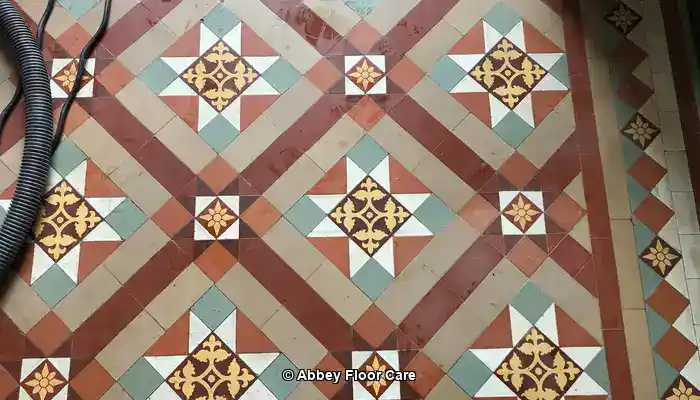
Investigating the Role of Mineral Oxide Pigments in Victorian Tiles
Victorian mosaic and encaustic tiles derive their distinctive earthy hues from mineral oxide pigments embedded directly within the clay. These pigments not only lend durability but also contribute to the depth of colour that characterises these tiles. The primary pigments include:
- Iron oxide: produces terracotta reds, rich rust browns, and soft ochres, providing warmth to the tiles. Understanding their function is crucial for successful restoration.
- Manganese: yields deep browns and blacks, enhancing contrast and depth in design. Knowledge of these pigments aids in colour matching during repairs.
- Cobalt: supplies various blue hues, enriching aesthetic diversity. This range contributes significantly to the overall character of the tiles.
- Chromium: creates natural green shades, adding to the overall palette. The inclusion of these pigments reflects the artistry and craftsmanship of the period.
Understanding the Firing and Fusion Process of Victorian Tiles
The manufacturing process involves firing the tiles at temperatures around 1100°C, a procedure that vitrifies the clay and deeply fuses the pigments into the tile body. This ensures that the colour permeates the entire tile rather than merely residing on the surface, resulting in long-lasting vibrancy that resists fading. This firing technique reinforces durability and showcases the exceptional craftsmanship involved in creating these historical pieces.
Characteristics of the Porous Unglazed Finish of Victorian Tiles
Typically, Victorian tiles exhibit a porous, unglazed matte finish that produces an aesthetically pleasing natural appearance. However, this porosity renders the tiles absorbent and sensitive to surface contamination and moisture, necessitating careful cleaning and maintenance to preserve their integrity and aesthetic appeal. Understanding these characteristics is essential for the appropriate care and restoration of these historic tiles.
Variability in Colour Durability Among Different Tile Types
Natural earth pigments, particularly in red and yellow tiles, usually contain fewer mineral additives in comparison to darker colours like black, which are formulated with manganese. This difference in composition implies that red and yellow tiles are generally less hard-wearing and more susceptible to surface dishing under heavy traffic. Over time, this wear results in shallow depressions concentrated where footfall is heaviest, leading to uneven colour intensity and a loss of surface flatness that detracts from their aesthetic appeal. Understanding these variations is crucial for developing targeted restoration strategies.
Key Considerations for Successful Victorian Tile Restoration
A comprehensive understanding of pigment composition and tile wear patterns is essential for devising a successful restoration plan. Softer-toned tiles necessitate gentler cleaning methods and tailored impregnating sealers that respect their unique physical properties while enhancing colour vibrancy. In contrast, darker, more durable tiles can endure more intensive cleaning but still require breathable, colour-enhancing protective treatments to maintain their vibrancy over time. This tailored approach is vital for preserving both the historical and aesthetic qualities of the tiles.
Specialised Cleaning Methods for Restoring Victorian Mosaic Tiles
Effective cleaning is essential to return Victorian encaustic and mosaic tiles to their original vibrancy. However, the cleaning of these tiles requires a specialised approach that goes beyond simple pH-neutral detergents typically recommended. Professional restorers employ carefully formulated alkaline cleaners and mechanical techniques to dislodge heavy soiling and old residues without compromising the historic fabric of the tiles. Understanding the appropriate cleaning methods is critical for achieving the desired results.
The Importance of Debris Removal Before Cleaning
The cleaning process begins by removing all loose dirt and grit using soft brushes or vacuuming with brush attachments. This first step is paramount in preventing scratches on the delicate tile surfaces during subsequent cleaning phases, ensuring that the restoration process is as effective as possible. Such attention to detail is vital for maintaining the tiles’ integrity throughout the cleaning process.
Utilising Alkaline Cleaners for Thorough Soil Removal
Unlike pH-neutral cleaners, which often lack the necessary chemical strength to tackle ingrained fatty acids and organic soils, alkaline cleaners are indispensable for thoroughly breaking down household oils, grease, and sticky residues found on tile surfaces and within grout lines. These alkaline formulations effectively dissolve the binding agents of dirt, sugars, and fats, allowing for their efficient removal while remaining compatible with the mineral structure of Victorian tiles. Employing high-quality alkaline products ensures a thorough clean while safeguarding the tiles.
Professional-use alkaline products, such as PS87 PRO or bespoke formulations from heritage cleaning specialists, are typically used in a diluted form. This approach guarantees deep cleaning without being overly aggressive on the clay body. It is important to note that, even with alkaline cleaners, caution is essential, and spot testing is highly recommended to avoid any unintended damage, thus safeguarding the tiles’ historical significance.
Mechanical Agitation with Appropriate Pads for Enhanced Cleaning Effectiveness
Incorporating mechanical action significantly enhances overall cleaning effectiveness. Low-speed rotary scrubbers fitted with red or, in some instances, green non-abrasive pads are commonly employed to agitate soils from small pits, tile surfaces, and grout lines. These pads clean thoroughly while preserving the integrity of tile edges and delicate surface details, ensuring that the restoration maintains the original character of the tiles. This method strikes a balance between effective cleaning and the preservation of historical value.
Targeted Removal of Waxes and Exotic Sealants
The accumulation of old waxes and sealants typically results from years of use, particularly from DIY efforts that utilised inappropriate products. Water-based cleaners—either alkaline or mildly acidic—are preferred for the removal of these residues, as they do so without damaging the tile’s mineral structure. However, stubborn ‘exotic’ or solvent-resistant coatings may necessitate targeted solvent-based removers such as Lithofin Wax-Off or LTP Solvex. These solvents effectively soften and emulsify waxes and old sealants but must be handled with care by professionals trained in their safe application and disposal to prevent damage. Ensuring the right approach protects the tiles’ integrity throughout the cleaning process.
Thorough Rinsing and Drying Following Cleaning
After the chemical cleaning process, thorough rinsing is critical to eliminate all cleaning residues. Multiple rinses with clean water, combined with wet vacuum extraction, ensure that no detergent or solvent traces remain that could interfere with subsequent restoration coatings. Drying time can vary considerably based on environmental conditions such as humidity, surface type, and moisture content. Restoration experts always utilise moisture meters to confirm that the tiles are fully dry before applying any impregnating sealers or protective treatments. This method is crucial in preventing moisture entrapment, which could lead to efflorescence, staining, or damage beneath sealed layers, thus safeguarding the historical fabric of the tiles.
Advantages of Comprehensive Cleaning as Preparation for Restoration
A meticulous cleaning process reveals the actual condition of the tiles by removing visual obstructions. This exposure allows for the identification of areas requiring repair and provides a clean, receptive surface for colour-enhancing impregnators or other restorative products. This careful preparation is fundamental to the success and longevity of Victorian mosaic tile restoration, ensuring that these tiles can be cherished for generations to come, preserving their rich history and craftsmanship.
Revitalising Colour with High-Quality Impregnating Sealers
Restorers utilise impregnating colour-enhancing sealers produced by LTP and Lithofin, brands renowned for their advanced, heritage-approved formulations. Unlike superficial coatings, these sealers:
- Penetrate deeply into tile pores to physically enrich colour by altering light refraction, thus revitalising the tile's overall appearance. This depth of penetration is crucial for long-term effectiveness and vibrancy.
- Maintain vapour permeability, which is essential for moisture escape and particularly critical in older floors lacking DPM layers. This feature supports the health and longevity of the tiles over time.
- Provide robust protection against stains and foot traffic while preserving the natural texture and gloss of the tiles. This durability ensures the tiles retain their aesthetic appeal and integrity.
- Applied in multiple light coats, each layer is allowed to penetrate before the next is added, ensuring complete uniformity and enhancing the overall appearance significantly.
These sealers effectively combat fading by restoring vibrancy while maintaining the breathable nature of the historic floor, ultimately enhancing the aesthetic of the tiles and underscoring their historical significance.
Careful Repair of Damaged Tiles and Effective Colour Tinting Techniques
Tiles that exhibit chips, cracks, or missing pieces require meticulous repair using tinted epoxy or lime-based mortars, colour-matched with natural mineral oxides. Restoration experts often source matching replacement tiles from salvage archives to preserve pattern continuity. Colour tinting involves the selective application of earth-pigment-infused wax or resin mixtures to gently blend worn or missing pattern areas, always respecting the tile's breathability and reversibility to ensure that any restoration can be undone if necessary. This approach guarantees that repairs harmonise with the original design, preserving the tiles' historical integrity.
Best Practices for Effective Colour Tinting
- Utilise small, controlled applications to avoid overt colouring that could disrupt the tile's original appearance. Precision is key in maintaining authenticity throughout the restoration.
- Conduct patch testing on inconspicuous areas prior to full application to ensure compatibility and effectiveness, safeguarding the tiles against potential damage during the process.
- Ensure compatibility with the impregnating sealers applied to the entire surface, protecting the integrity of the restoration over time. This careful consideration is essential for achieving long-term success.
Long-Term Maintenance Strategies for Restored Victorian Mosaic Floors
To preserve the restored colour and condition of Victorian mosaic tiles, ongoing care and attention are paramount:
- Routine cleaning with pH-neutral, non-abrasive detergents specifically formulated for historic tiles is vital. This ensures that the tiles remain in excellent condition and retain their aesthetic appeal.
- Implement preventive measures, such as placing entrance mats to reduce dirt ingress, thereby protecting the tiles from unnecessary wear and extending their lifespan. This simple strategy can significantly enhance tile longevity.
- Promptly address any liquid spills, particularly acidic substances like vinegar or wine, to prevent surface etching and discolouration. Quick action is essential for effective tile preservation.
- Regularly reapply breathable impregnating sealers every 3–5 years or as wear dictates, ensuring ongoing protection and vibrancy. This proactive maintenance is critical for sustaining the tiles' visual appeal over time.
- Monitor the floors for signs of efflorescence or moisture ingress, which may indicate underlying damp issues that need to be addressed. Staying vigilant helps maintain the integrity of the tiles.
Common Pitfalls to Avoid in Tile Restoration Projects
- Avoid wax treatments that can obstruct breathability, trigger efflorescence, or lead to wax blooming. Understanding product compatibility is crucial for successful restoration.
- Do not use acrylic or polyurethane sealants, as they can trap moisture and cause degradation over time, compromising the tiles' integrity. Selecting the appropriate sealant is vital for preserving historical value.
- Limit the use of harsh chemical cleaners, as they can erode the clay and pigments, resulting in irreversible damage. Gentle cleaning solutions are essential for long-term preservation.
- Never repaint tiles; paint films alter their visual and physical properties and are not reversible, ultimately compromising the tile's authenticity. Maintaining the original character is imperative.
- Recognise and address issues in older subfloors before sealing to ensure any underlying problems are properly rectified. This proactive approach is fundamental for successful restoration.
Showcasing Successful Victorian Tile Restoration Case Studies
Examples of successful restoration highlight the effective application of these principles:
Transformative Restoration of a Victorian Hallway in Sheffield
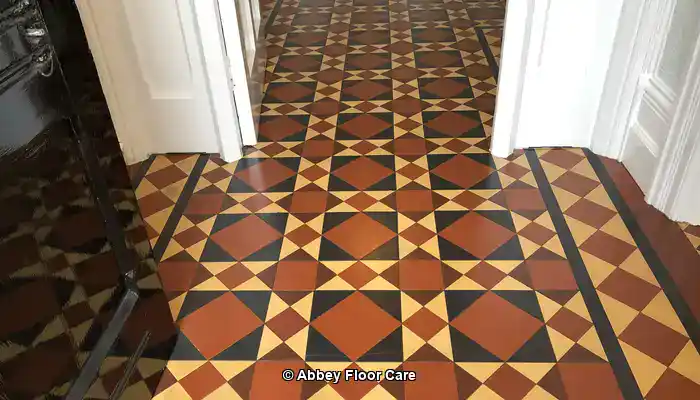
Our meticulous cleaning process successfully eradicated years of wax and grime, followed by the application of a Lantania Avo colour-enhancing impregnating sealer, which visibly deepened the colours of the tiles. This was subsequently complemented by applying an acrylic topical sealer to provide surface protection for floors installed over a damp-proof membrane, ensuring their longevity and visual allure. This project exemplifies the successful integration of restoration techniques with historical preservation.
Expert Restoration of a Civic Mosaic Floor in Chesterfield

After carefully cleaning and removing old topical sealers, the floor was sealed with an LTP Colour Enhancing Impregnating sealer. The surface was further protected with a wax, meticulously applied to seamlessly integrate the clay tiles into the historic fabric of the building, thereby preserving its character while enhancing its visual appeal. This thoughtful approach underscores the importance of sensitivity to the original design in restoration efforts.
The Significant Role of Professional Restoration in Heritage Preservation
Restoring the colour and pigment of Victorian mosaic tiles is a multifaceted endeavour that balances material science, craftsmanship, and sensitivity to heritage values. By employing premium impregnating colour-enhancing sealers from industry leaders like Dry Treat, Lantania, and Lithofin, one can ensure long-term breathability, protection, and vibrancy of colour in these historic tiles. Through skilled cleaning, careful repair, and dedicated maintenance, we can uphold authenticity while rejuvenating these significant floors for future generations to appreciate and enjoy, ensuring that the rich history and artistry of these tiles continues to thrive.
Frequently Asked Questions about Victorian Tile Restoration
What are Victorian mosaic tiles and why are they significant?
Victorian mosaic tiles are decorative tiles that gained popularity in the 19th century, renowned for their vibrant colours and intricate patterns. They were commonly installed in public buildings and homes, becoming a hallmark of the era's architectural style and symbolising the exceptional craftsmanship of the time.
How can I effectively restore faded Victorian mosaic tiles?
Restoring faded Victorian mosaic tiles entails a comprehensive process of cleaning, repairing damages, applying new pigments to match the original colours, and subsequently sealing the tiles to protect them from future wear and fading. This multi-step approach ensures a successful and sustainable restoration.
What materials are crucial for tile restoration projects?
Essential materials for tile restoration include specialised cleaning solutions, pigments, adhesives, grout, and protective sealants, all chosen for their compatibility with the original tiles to guarantee a successful restoration. Utilising the right materials is critical for achieving desired outcomes and maintaining authenticity.
How long does the Victorian tile restoration process typically take?
The duration of tile restoration can vary significantly based on the size and condition of the area being restored, typically ranging from a few days for smaller projects to several weeks for larger restorations requiring more extensive work. Understanding this timeline aids in planning and setting realistic expectations.
Can I undertake the restoration of Victorian tiles myself?
Yes, smaller restoration projects can often be tackled as a DIY endeavour if you possess the necessary skills and tools. However, more complex repairs generally necessitate professional expertise to ensure quality results and avoid damaging the tiles, highlighting the importance of experience in restoration.
What is the cost associated with restoring Victorian mosaic tiles?
Costs for restoration can vary widely based on project size and condition, with estimates ranging from a few hundred to several thousand pounds for comprehensive restorations, depending on the extent of work needed. Understanding potential costs is vital for effective budgeting.
How do I select the right restoration expert for my project?
When choosing restoration professionals, look for those with experience in historical projects, positive reviews, and a commitment to using authentic materials and techniques that align with heritage preservation values. This diligence ensures quality restoration work and the preservation of historical integrity.
What challenges do restorers frequently encounter during the process?
Restorers frequently face challenges such as matching original colours, repairing damaged tiles, and ensuring the longevity of the restoration work while maintaining the tiles' historical integrity. Recognising these challenges prepares for effective solutions and informed decision-making.
How can I maintain restored tiles to ensure their longevity?
Regular cleaning with pH-neutral products, avoiding harsh chemicals, resealing periodically, and promptly addressing any damage are key strategies for maintaining the quality and appearance of restored tiles over time. Consistent care is crucial for preservation and longevity.
What innovations are currently present in tile restoration practices?
Recent innovations in tile restoration include advanced cleaning solutions, new types of sealants, and digital technologies for precise colour matching and pattern replication in restoration projects, enhancing both efficiency and effectiveness, and showcasing the evolution of restoration techniques.
The Article Restoring Colour and Pigment to Faded Victorian Mosaic Tiles first found on https://www.abbeyfloorcare.co.uk
The Article Restoring Colour to Faded Victorian Mosaic Tiles appeared first on https://fabritec.org
The Article Restoring Faded Victorian Mosaic Tiles to Their Original Color Was Found On https://limitsofstrategy.com

